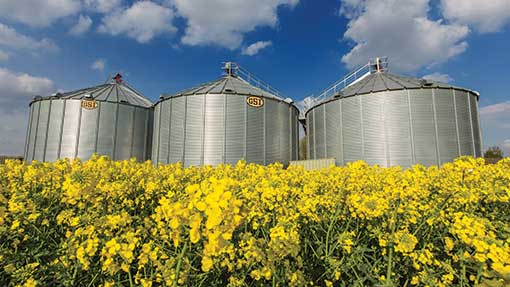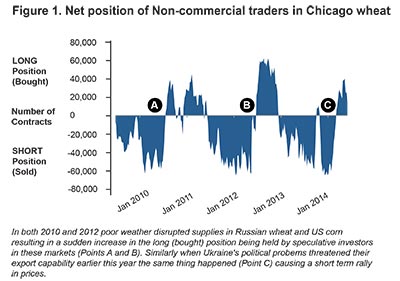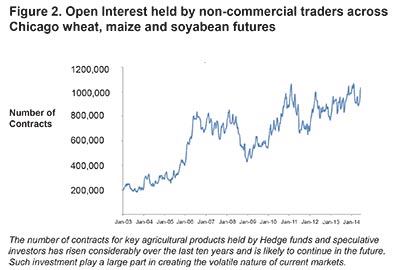How speculative investors impact grain markets

Recent fluctuations in grain prices have been largely sparked by global weather events and further fuelled by the actions of speculative investors, writes Nidera’s David Eudall. So what do this year’s relatively becalmed weather conditions hold in store for harvest 2014?
Sharp movements in grain prices have become a feature of the markets in recent years and, while they are usually instigated by a change in supply, or concerns about it, it is the actions of investment funds outside agriculture that usually drive them.
Over the past decade, grain markets have become increasingly volatile due to the effects of negative weather events causing fears of supply issues.
Professional investors thrive on volatile markets and the inherent instability of recent agricultural markets has attracted a large volume of hedge funds and other speculative investors. From 2003 to 2014, positions held by them in Chicago wheat, corn and soya bean futures have actually increased fivefold.
In 2010 and 2012 in particular, weather events disrupted supply in both Russian wheat and US corn and these years saw a marked increase in outside investors buying grain with the view of holding it to take advantage of higher prices.
 David Eudall
David Eudallbarley and wheat trader
Nidera
This mass speculation was then accompanied by a rapid increase in grain prices over a very short period of time.
The overall position of non-commercial traders in the Chicago wheat market shows this very clearly in both years (see chart).
It is clear from their actions in these years that investment funds are extremely logical in their approach to agricultural products and react quickly to the supply and demand profiles of global grain markets.

Because the involvement of such institutions can have such a profound effect on grain prices, predicting their actions is important but trying to second-guess what they are going to do next by analysing day-to-day trading decisions is difficult.
Due to the quantity of grain they hold, there are times during trading days when markets show unintuitive movements but over the longer-term there is rationality to the positions they take.
Ultimately, while the extra cash investment funds inject into markets mean price movements happen very quickly, longer-term prices settle to the values which supply and demand fundamentals dictate.
Short-term shocks to markets from external forces also act as another trigger for investment fund activity. For example, earlier this year when the Ukrainian political situation worsened, grain markets rallied (see chart).
This was due to uncertainty over the Ukraine’s ability to export but a large proportion of the market gain was triggered by the doubt and insecurity that the situation provided.

As the year has progressed, the investment fund positions have reduced due to little negative weather and expectations of comfortable harvests during 2014.
But long term the growing trend of commercial investor involvement in grain markets is here to stay. So too are the rapid fluctuations in grain price it produces.
In previous years markets would move slowly and cautiously as information on crop sizes and weather events filtered through. With improvements in news and social media, the information flow and investment reaction is much quicker.
High frequency, computer-driven trading can compound the situation executing thousands of deals in a single second.
And this phenomenon can only increase in the years ahead. With the United Nations climate change report earlier this year suggesting more variable growing conditions in the years ahead, the trigger of volatility is likely to become a feature of future production rather than an occasional event.
Politically, the world is far from stable, too.
Monitoring grain market information on an hour-by-hour basis is an unrealistic proposition for the majority of the domestic industry. But understanding overall global grain market sentiment and seasonal factors can go a long way to predicting the reaction of markets and the likely involvement of large-scale investors.
Grain Marketing Glossary of Terms
Short – Holding a sold position which benefits when the market falls
Long – Holding a bought position which benefits when the market rises
Bullish – A market trend, or market information, which moves the market higher
Bearish – A market trend, or market information, which moves the market lower
Commercial – Positions being taken in the market by traders who have a physical tonnage to cover
Non-Commercial – Hedge funds or investment funds who hold a speculative interest in the market
Overbought – Technical term referring to prices moving higher too quickly over a short period of time
Oversold – Refers to prices moving lower too quickly over a short period of time
High-Frequency Trading – Trading using ultra-short-term computerised trading strategies
